A walk to school
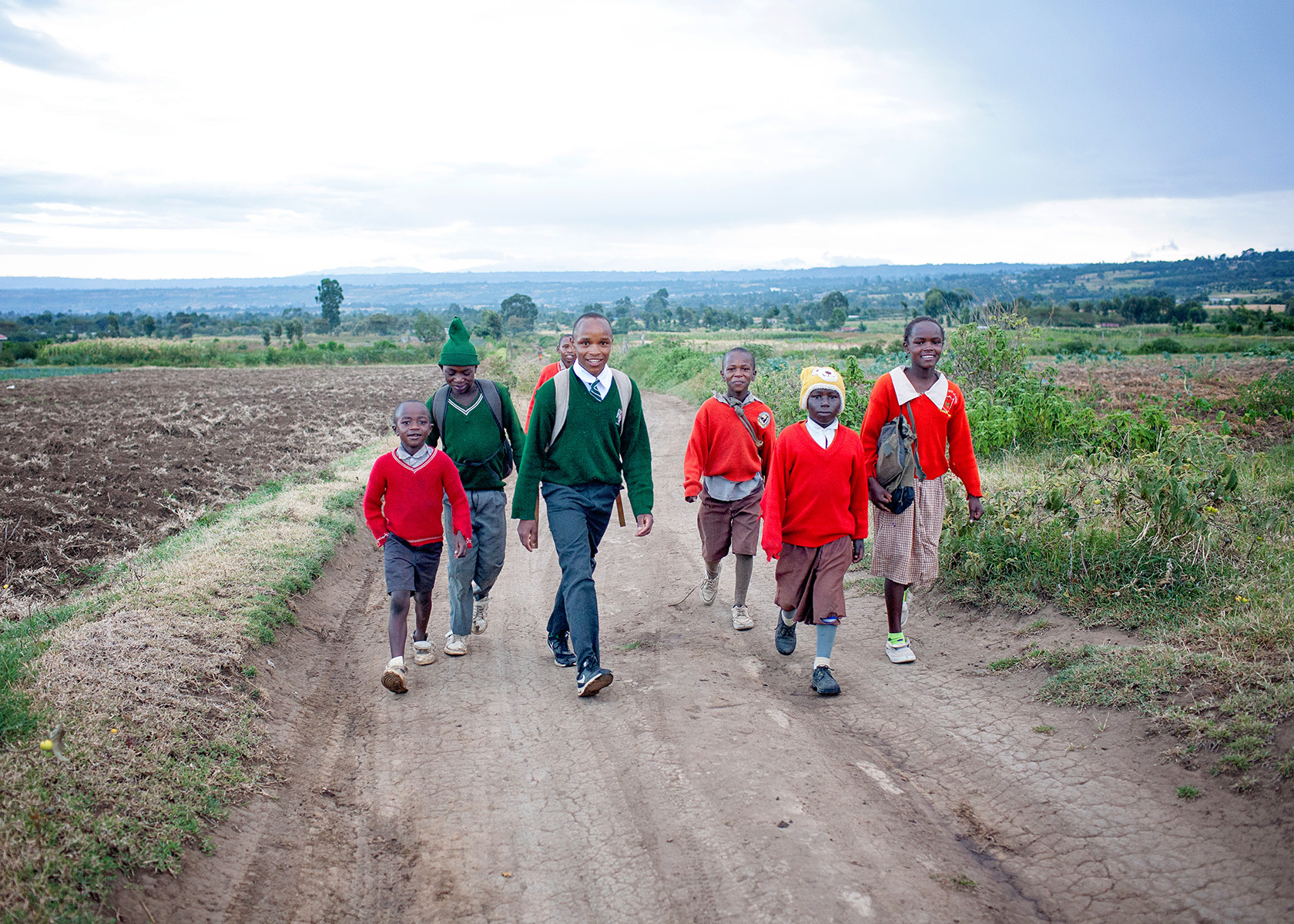
Daybreak
We arrive at Nathan’s house at dawn, just as the sky is growing bright around the edges. When his dad comes out to greet us, we learn that Nathan isn’t home – he’s across the field at the neighbors’ house milking cows and working through the morning chores.
This arrangement helps everyone involved: Nathan earns money for school fees, and the neighbors, well along in years, benefit from his youthful capability.
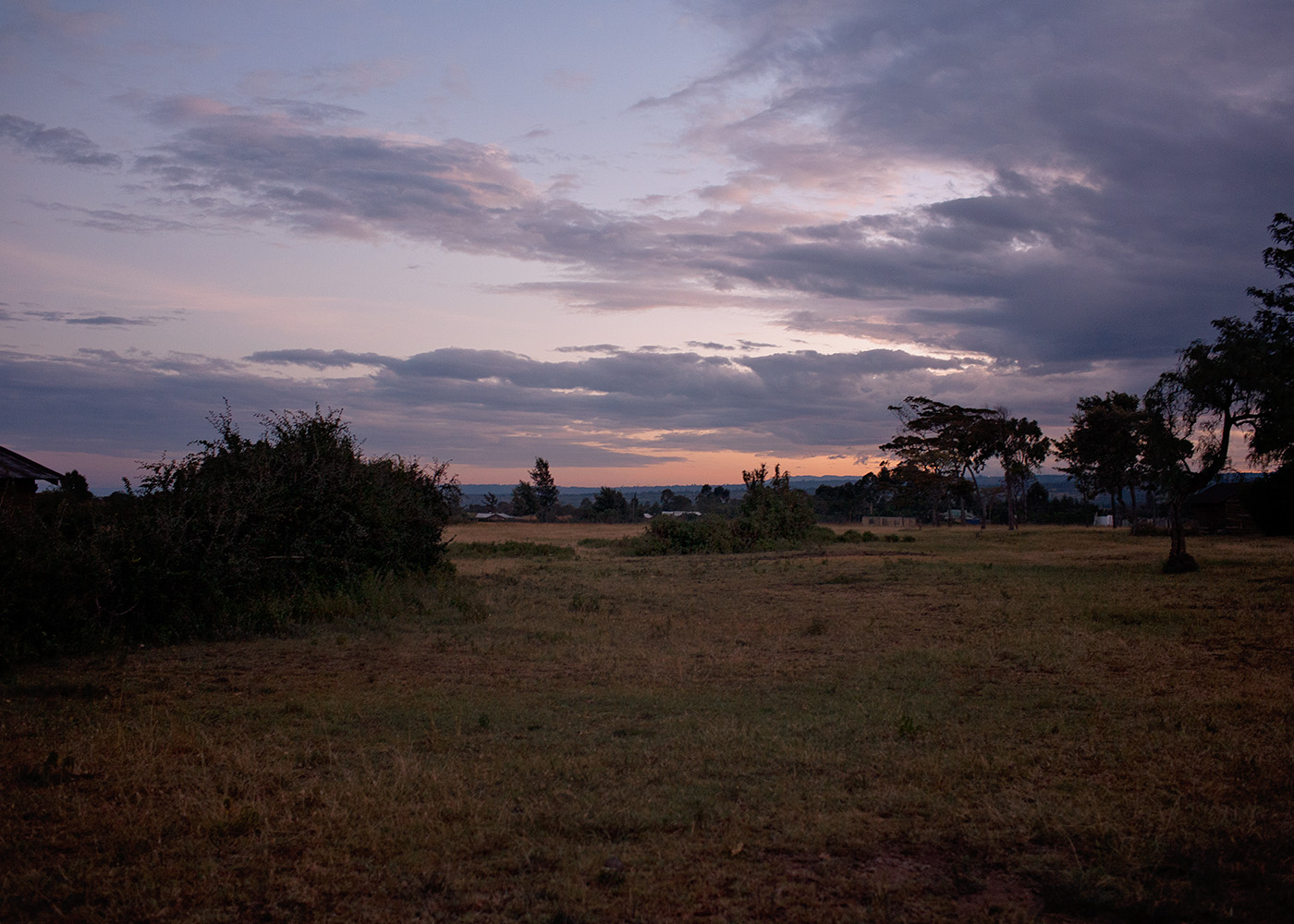
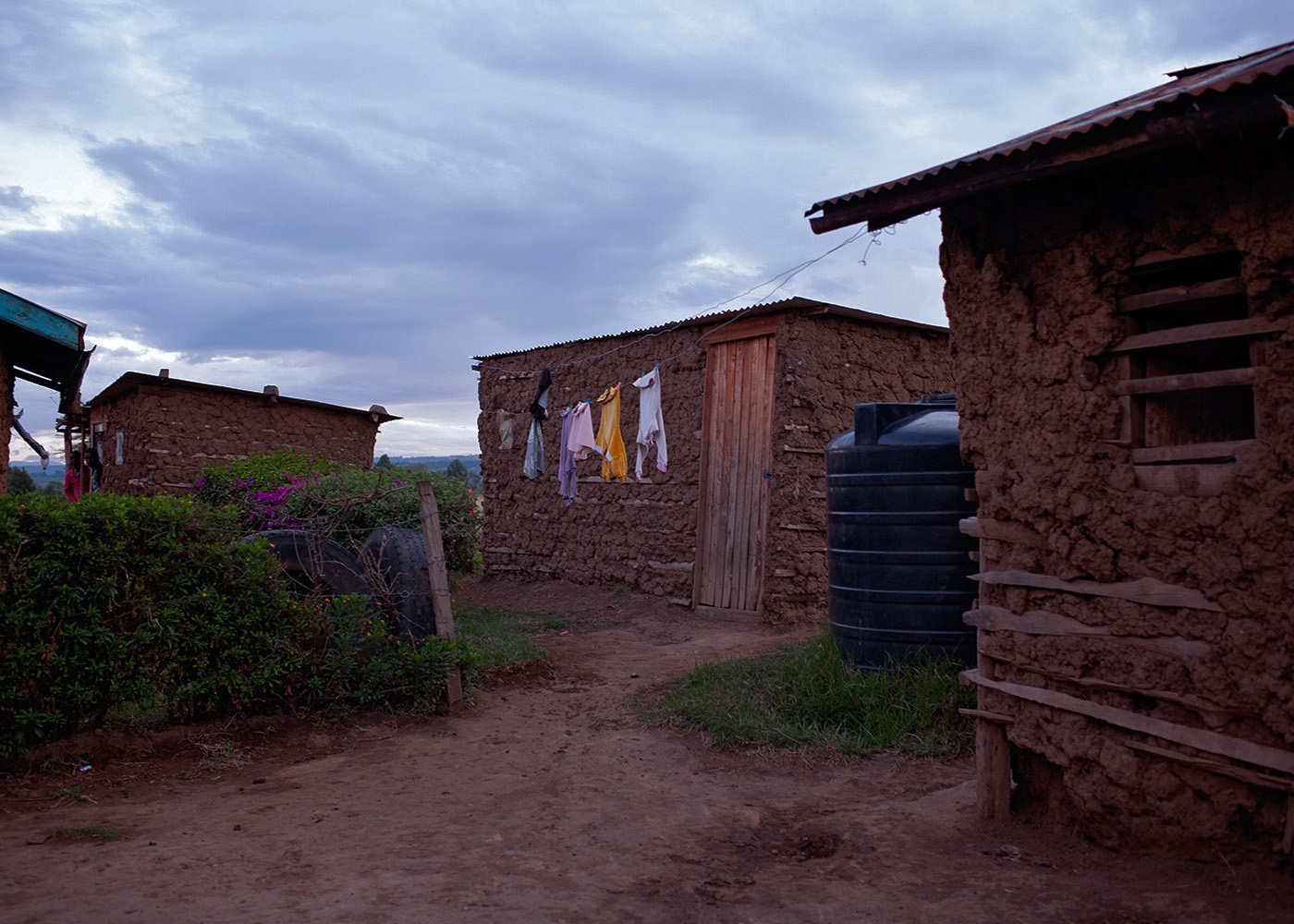
6:18 am
When Nathan comes jogging toward us, he’s smiling but visibly flustered. His watch is broken and he can tell from the light that he’s running late. We briefly meet his mom and a few relatives, gather school-age siblings and cousins, and set out on the walk to school.

If this were my childhood neighborhood in the States, our walk would end at the edge of the driveway where we’d wait for the telltale rumble and halt of the school bus.
At our KKC schools, however, nearly everyone walks to school. A few smaller children might hitch rides with motorbike drivers, three or four kids wedged together on a seat in a tangle of limbs and backpacks. But here there are no bright yellow buses, no carpool lines snaking down the block.
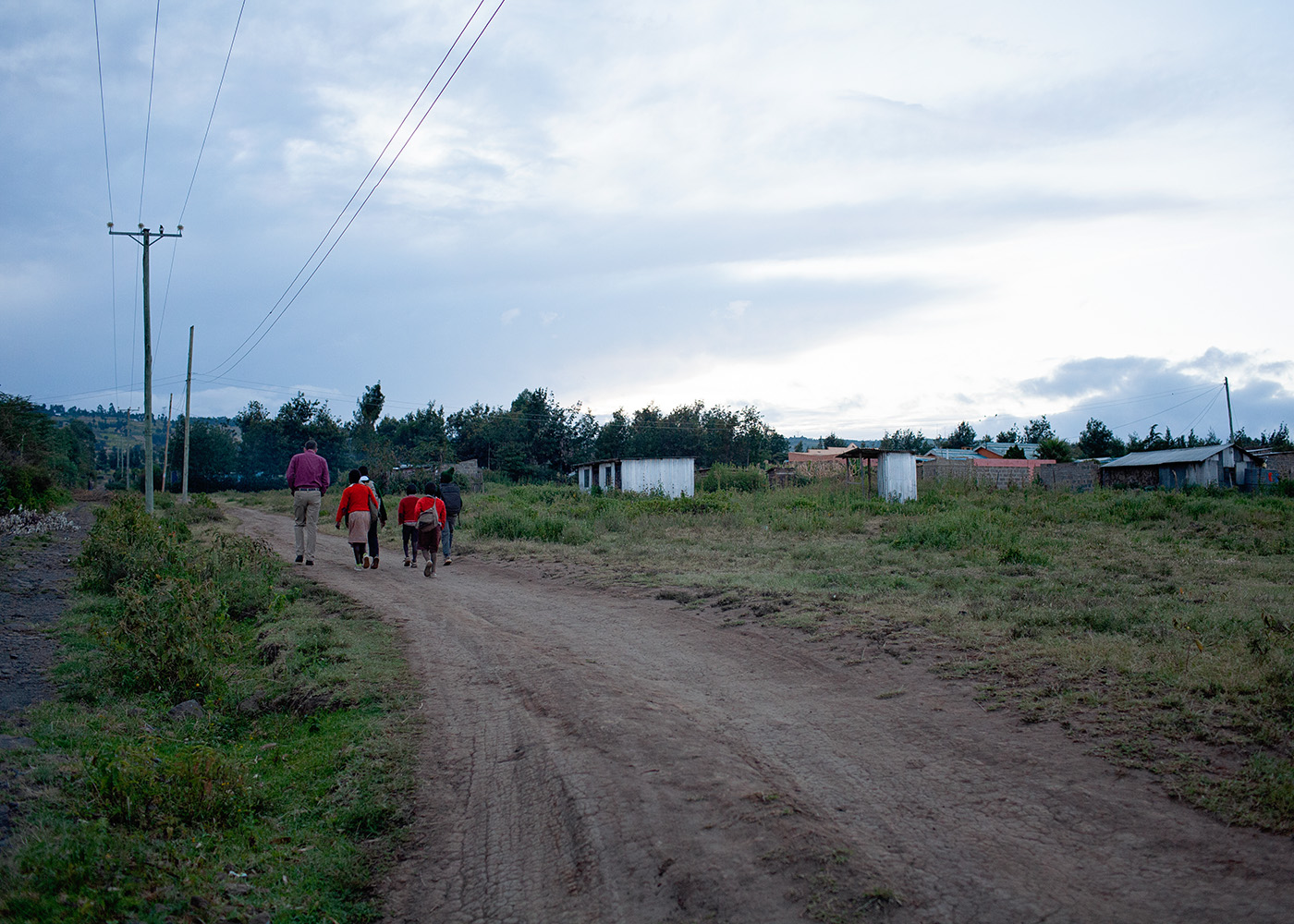
6:24 am
The morning is brisk as Nathan leads our group on dirt roads spooling past shops and plots of farmland. A milk truck trails us for the first few minutes, stopping at intervals to pick up full pails still warm from the morning’s milking.
We turn right and then right again, the road slowly arcing as it climbs into the brambled hills. Behind us, Lake Naivasha is luminous, a stretch of pale silver in the distance.
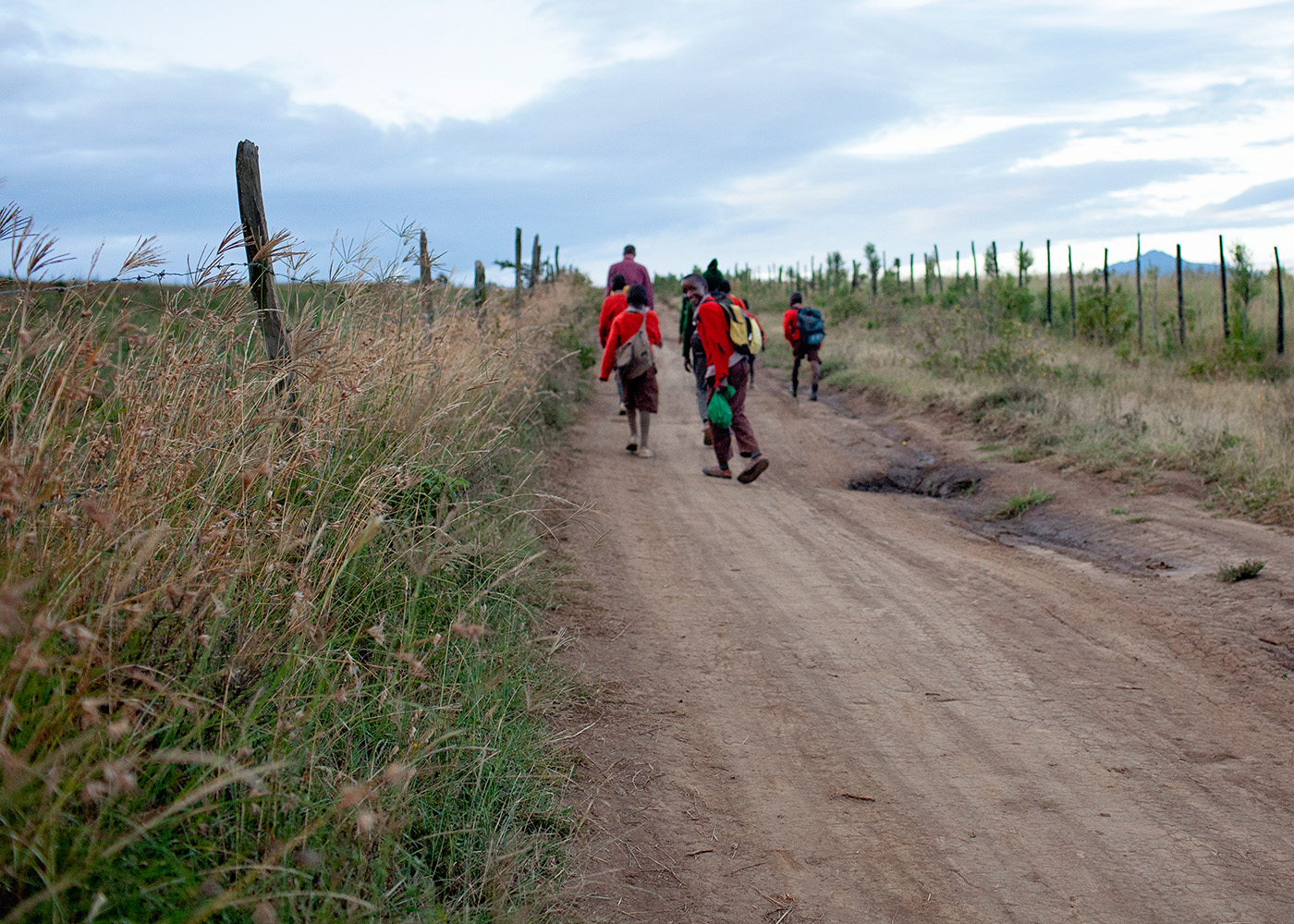
6:44 am
As we walk, other students jog to catch up with our group. The kids tease and jostle, maintaining a stream of stories that makes the kilometers glide by. Nathan regales us with curious tales of adventure that, knowing him, are every bit true.
“Over there,” he says, gesturing to a small, shallow hollow in a flat of dried mud. “Over there is a pit people dug to collect water. Sometimes if it rains, I swim in it – but usually first I have to clear away the sheep.”
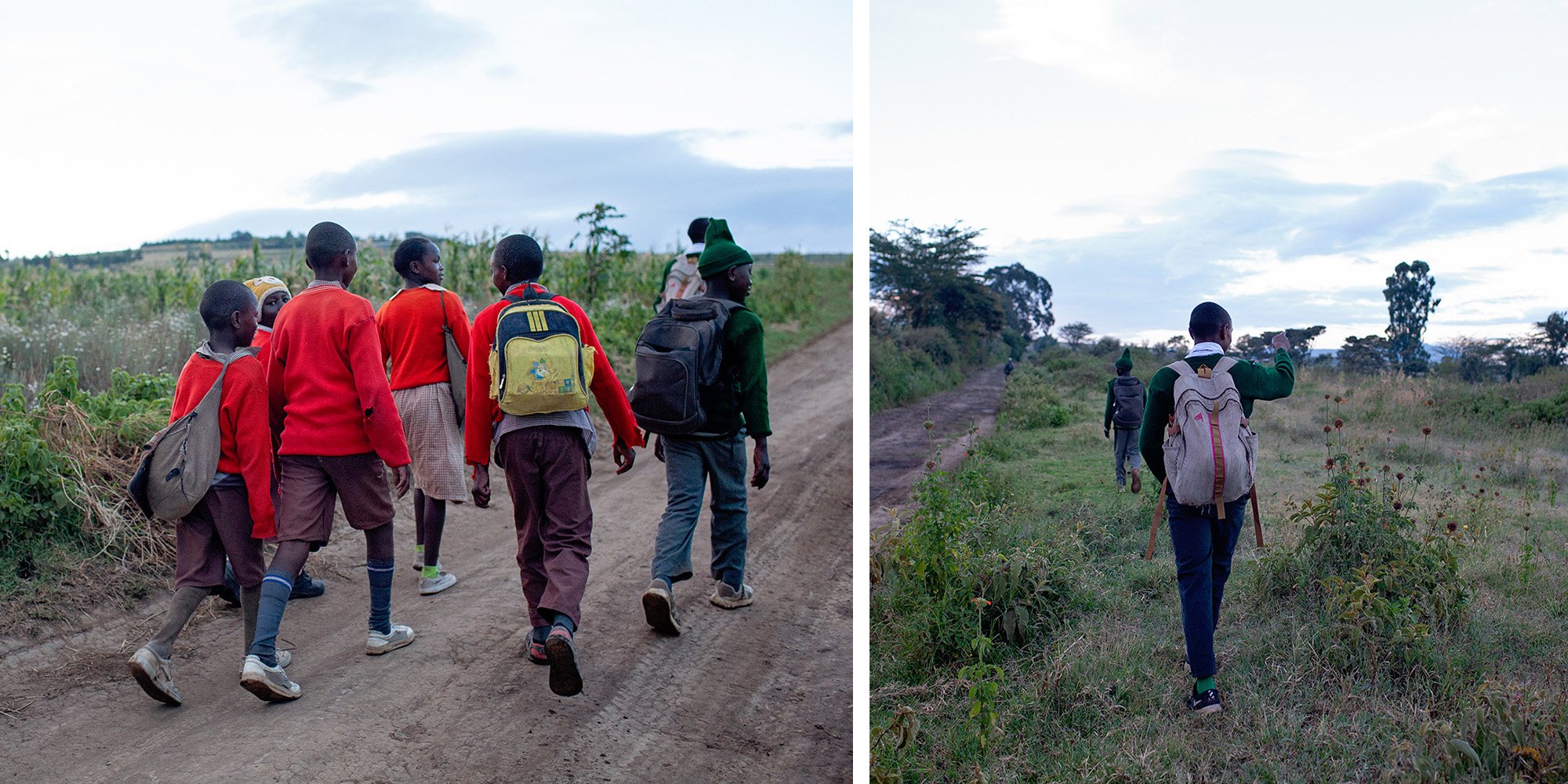
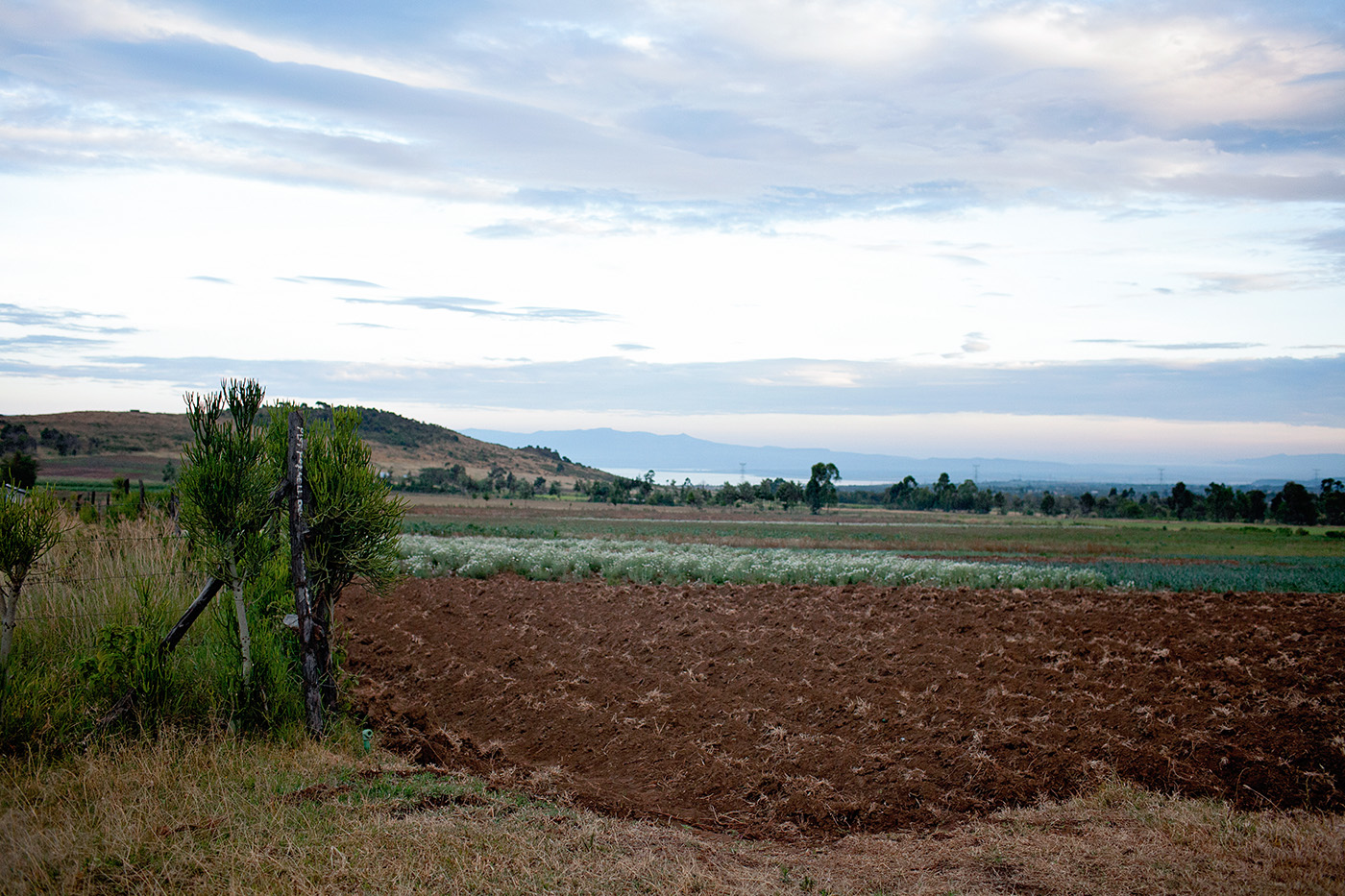
6:49 am
In another field Nathan points to a swath of white flowers with sun-yellow centers. “See that? The plants? That is called pyrethrum.” He tells us how he sometimes works in the fields cutting the flowers, earning 15 shillings per kilo, though one lady pays 20 shillings. Everyone wants to work for her.
“What are the flowers used for?” we ask.
“Medicine for the fields,” Nathan says. He squints a little as he walks, thinking of the word in English. “Pesticides.”
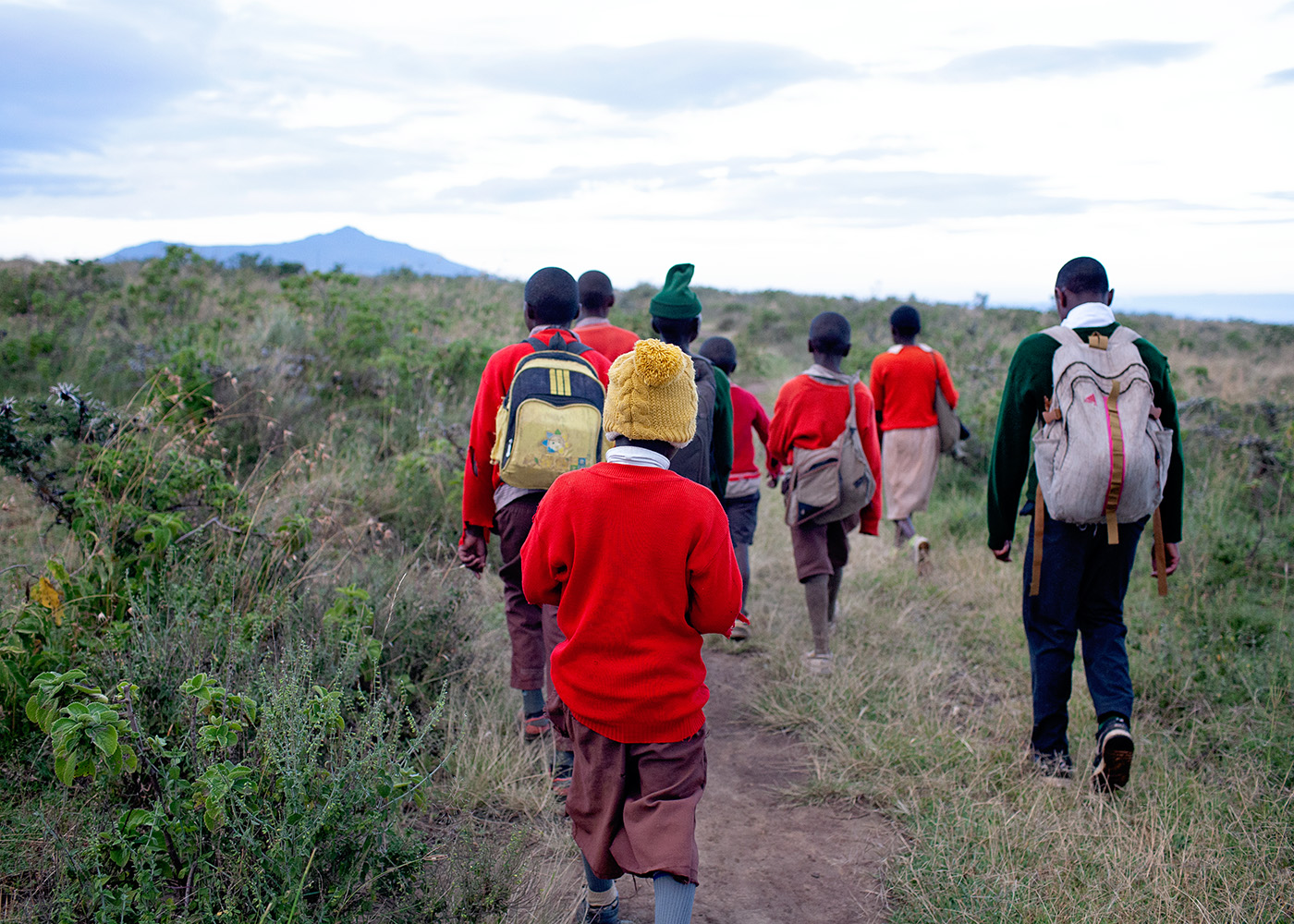
6:52 am
When the road curves to the right, we step through a large hole in a fence, following a path threading through fields of thistle. Despite this shortcut, we hike for another long, gorgeous stretch beneath clouds pulled thin across the morning sky.
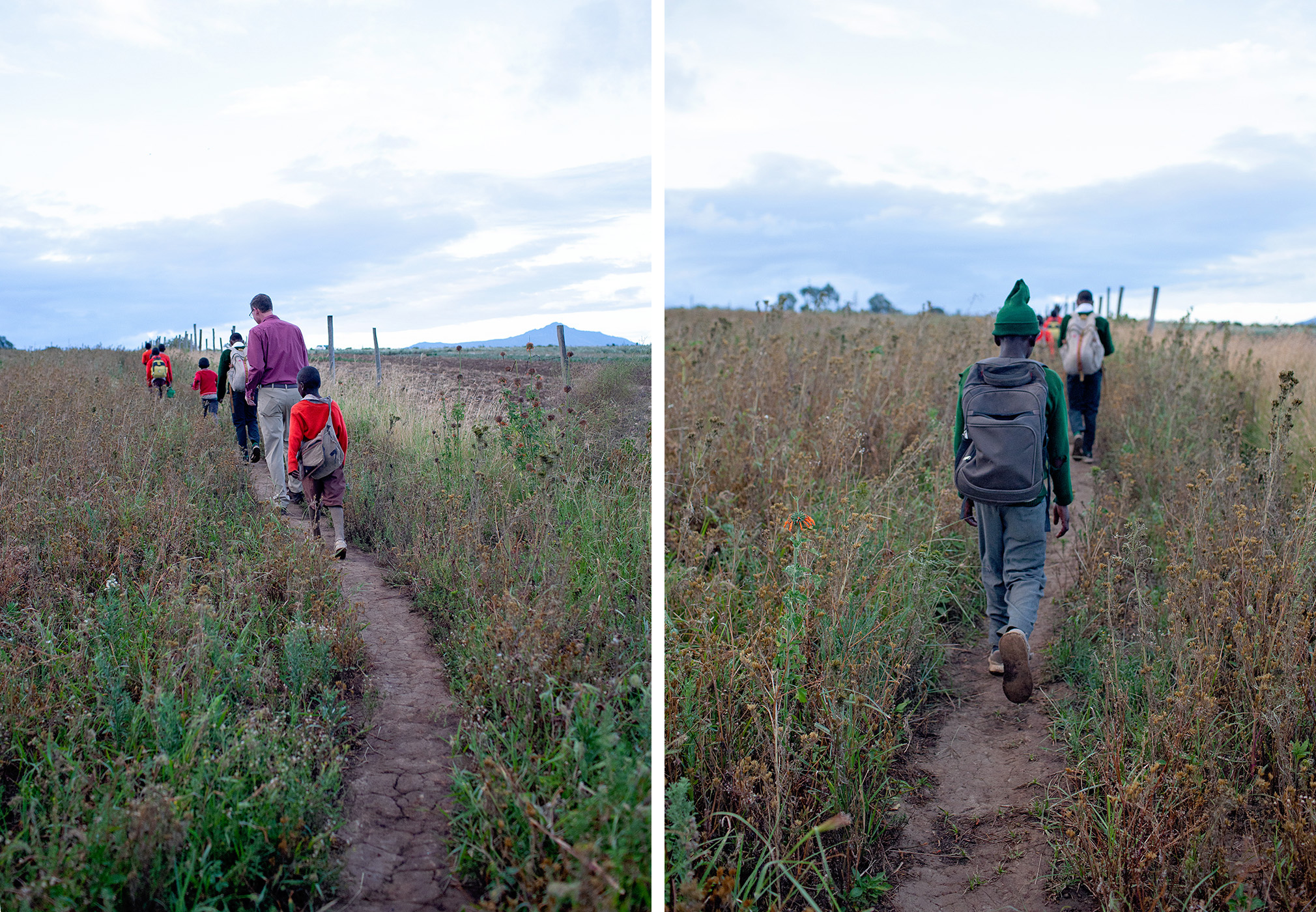
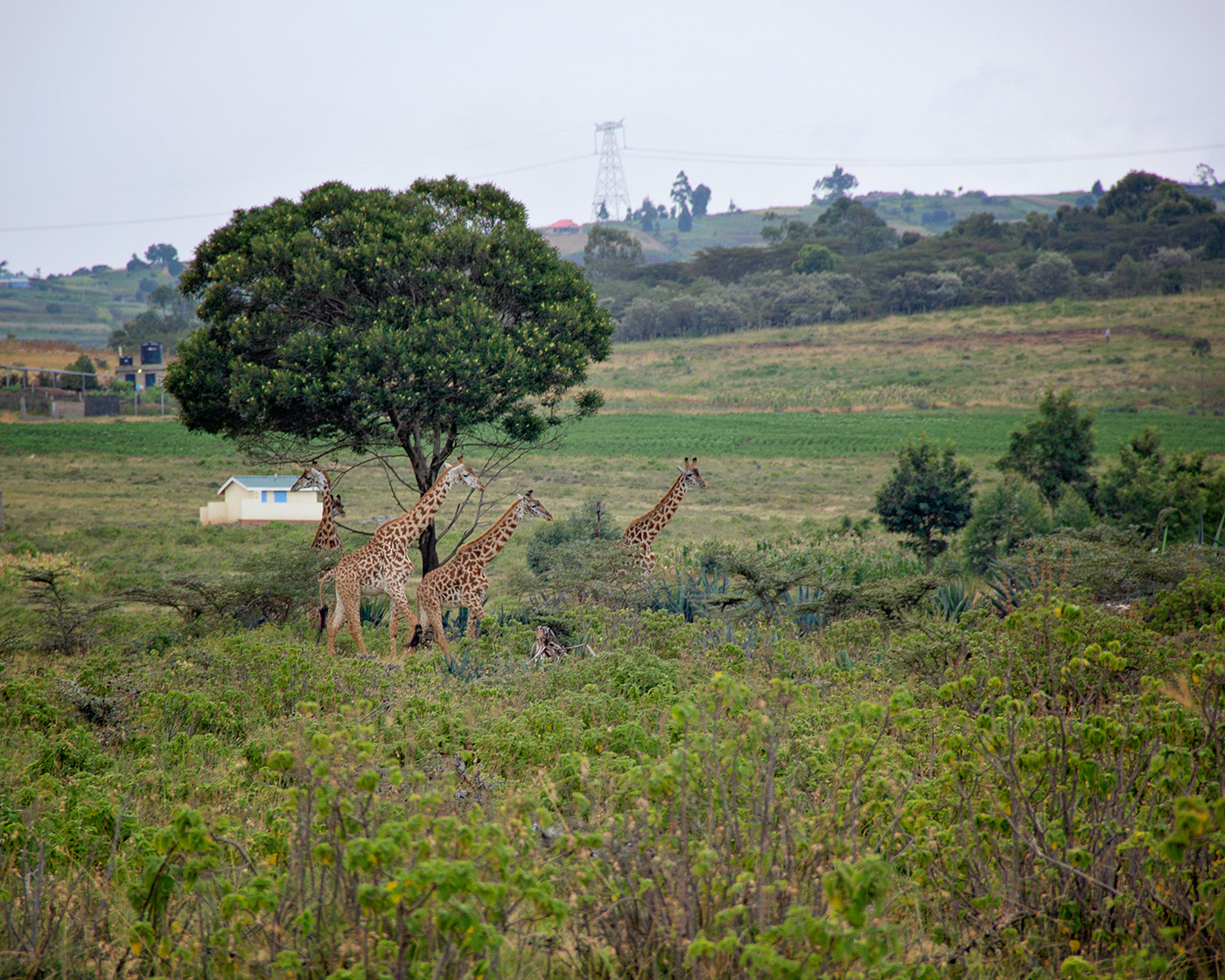
6:58 am
A few minutes later, the kids beside me point toward the trees to our left. “Giraffe!” they announce, and sure enough, a family of giraffe ambles across the field, their heads dipping forward with each step. I take a few pictures and jog to catch up with Nathan’s sister.
“Do you often see animals on the way to school?” I ask her.
Giraffe, yes, she tells me. Buffaloes, yes. Zebras, antelope, dik diks, yes. “Snakes?” I ask her. She nods with a smile. I scan the grass a little more intently as we walk.
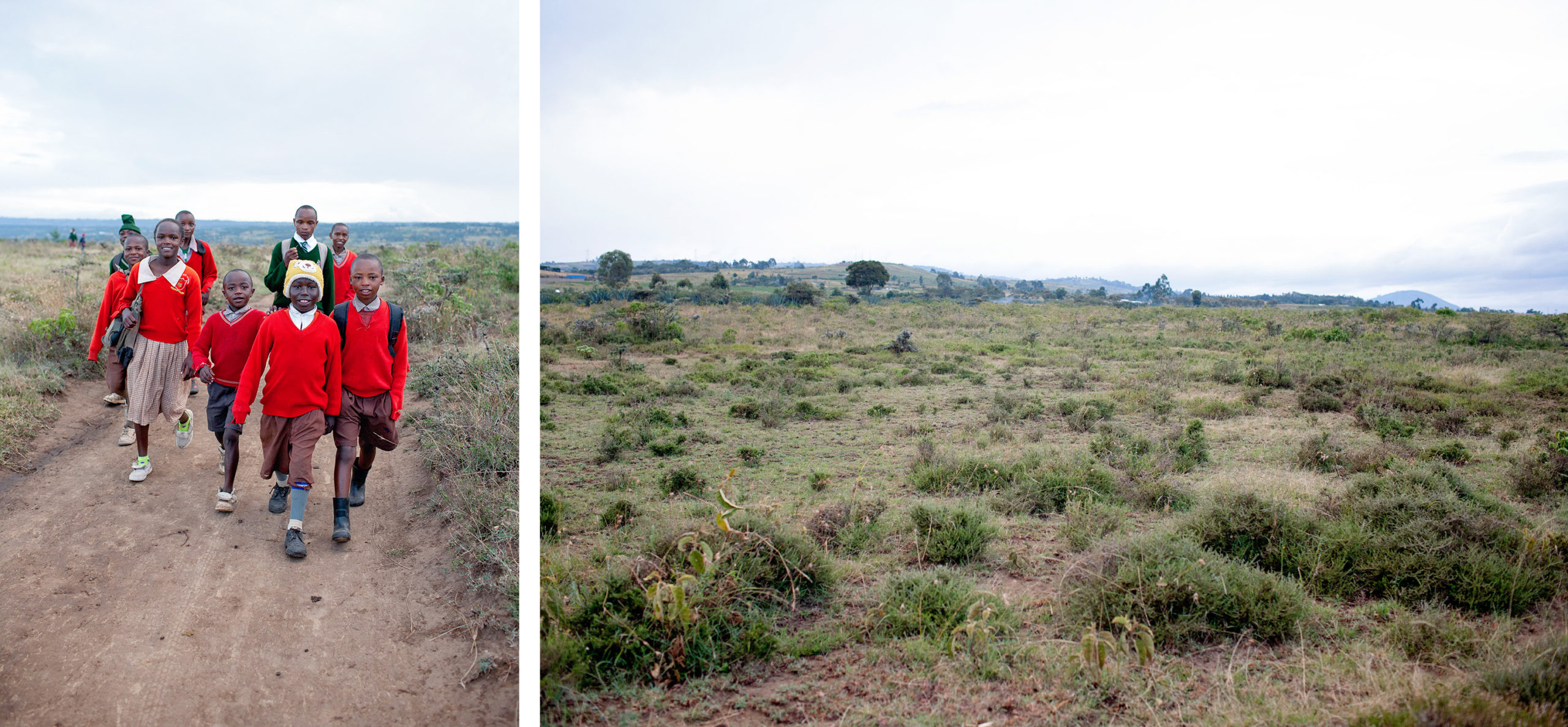
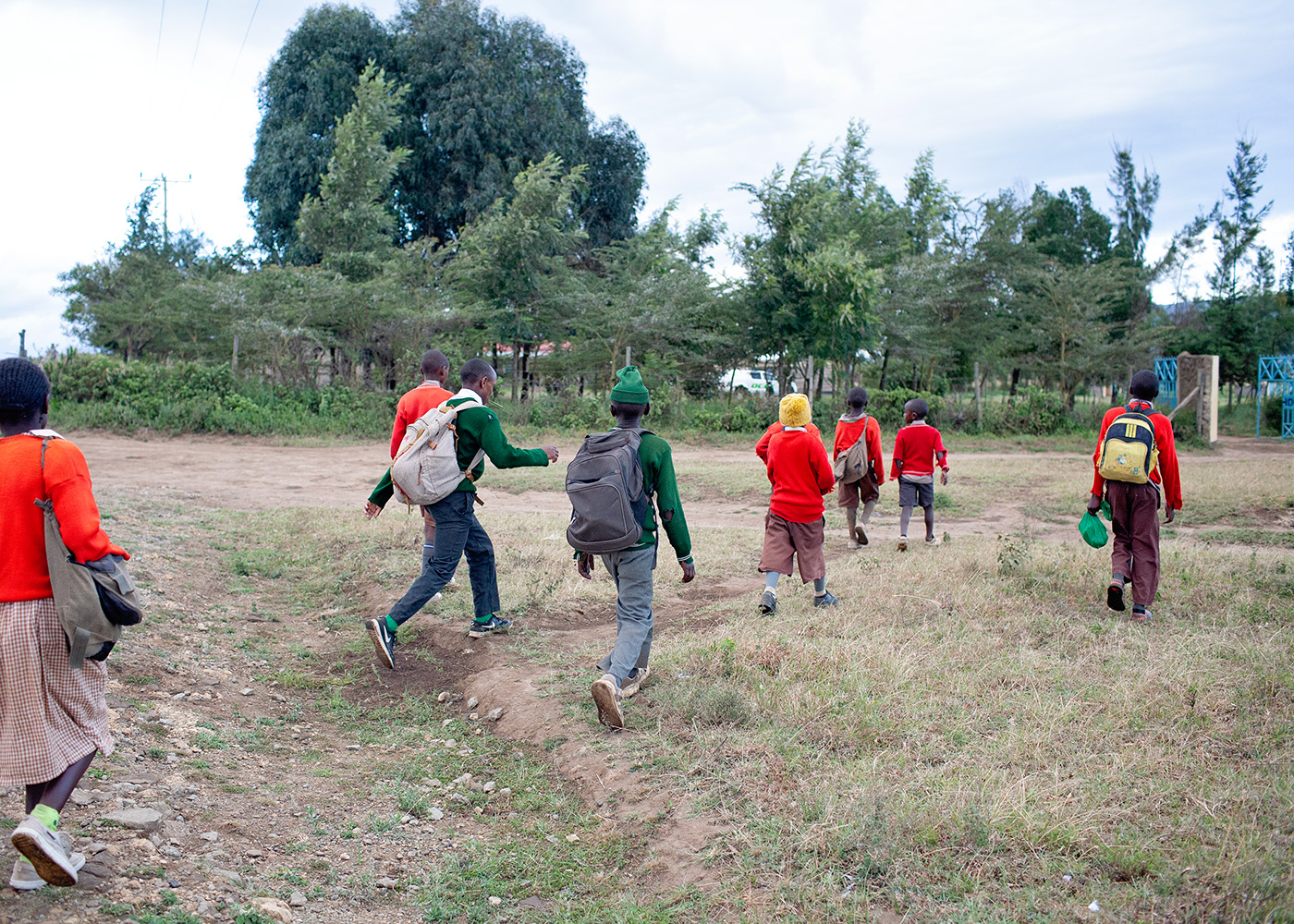
7:09 am
About 45 minutes after leaving Nathan’s house, the school crests into view.
The air is alive with chatter as we walk through the gates of Kamuyu Primary. Nathan hurries to his classroom, the grade 7 and 8 students just beginning morning devotions. We peek in to see students reaching eager hands into the air, volunteering to lead the group in singing.
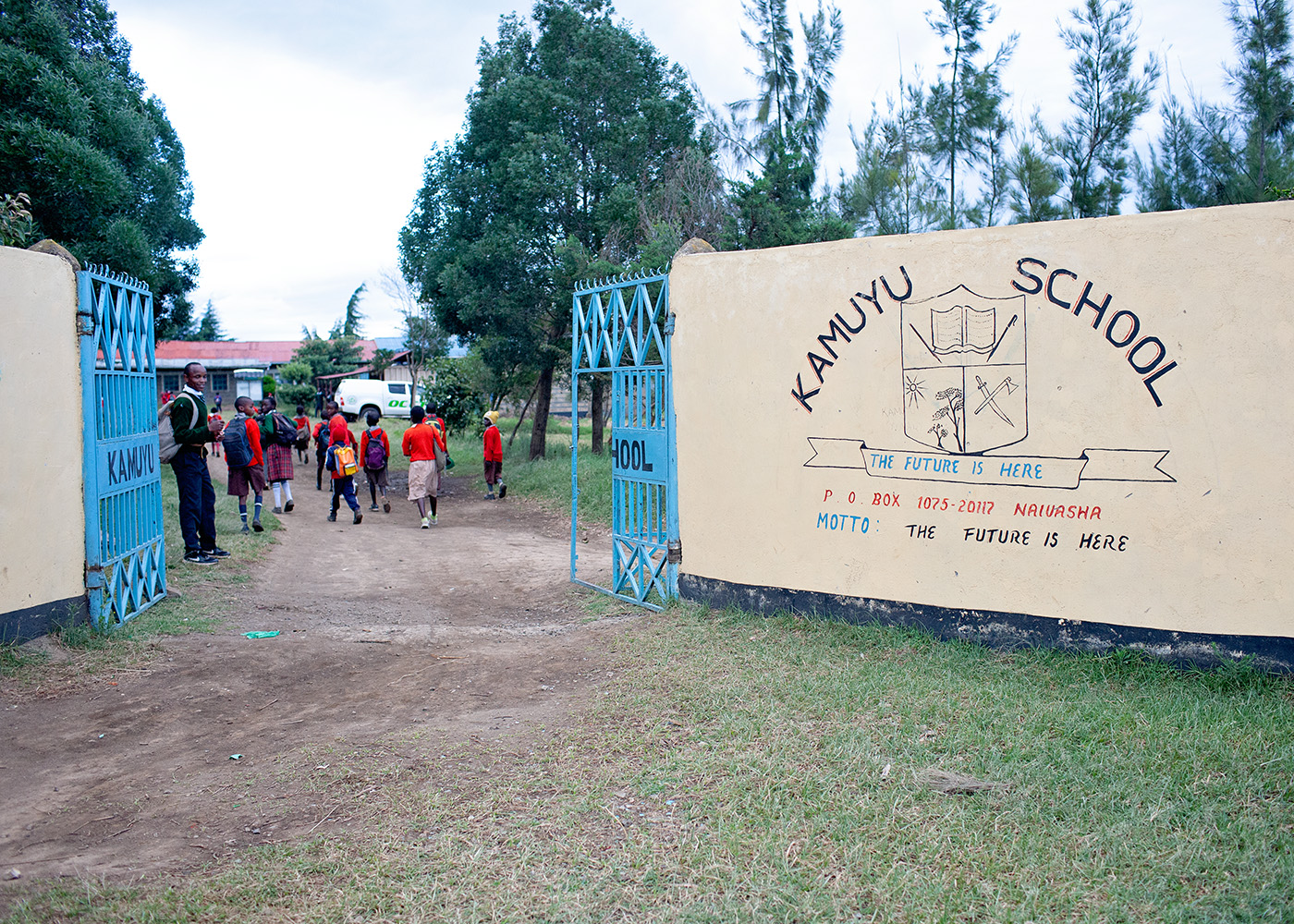
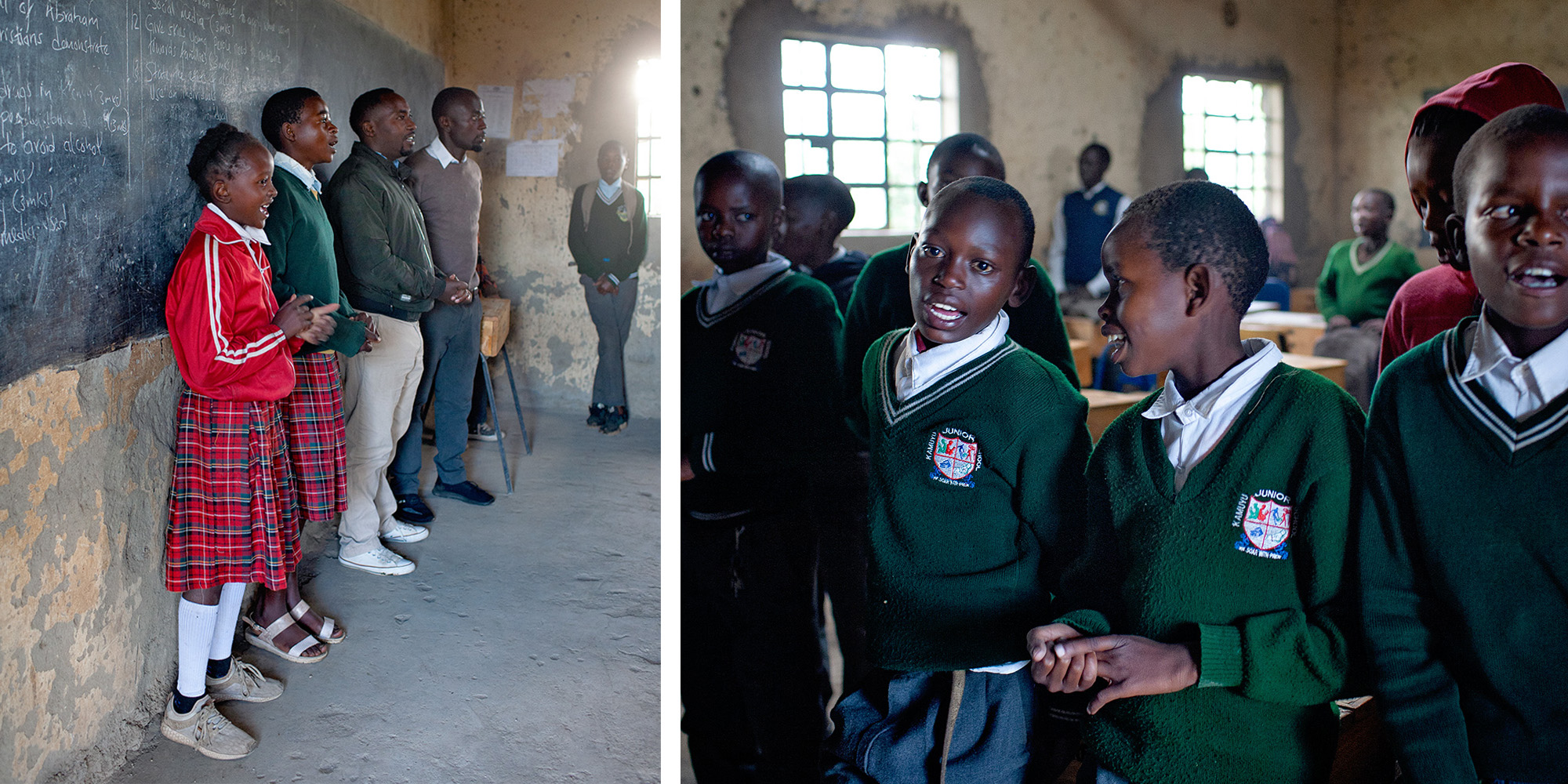
Often when we visit schools, we’ll get to chat with the students for a while. They ask me to tell them again the names of my kids, and what they’re studying at university in the States. And I ask them how many siblings they have, how long it takes them to walk to school.
I used to wonder about accuracy when they’d tell me it took 30, 40, 50 minutes to get to school. I’d gauge the length of their child-sized legs and think, is it really possible they walk for an hour and a half every day?
But now I know just how accurate this is. And I understand a little more clearly how school lunches are vital for our students, how these meals give them not just the energy to learn, but also to come to school to begin with.
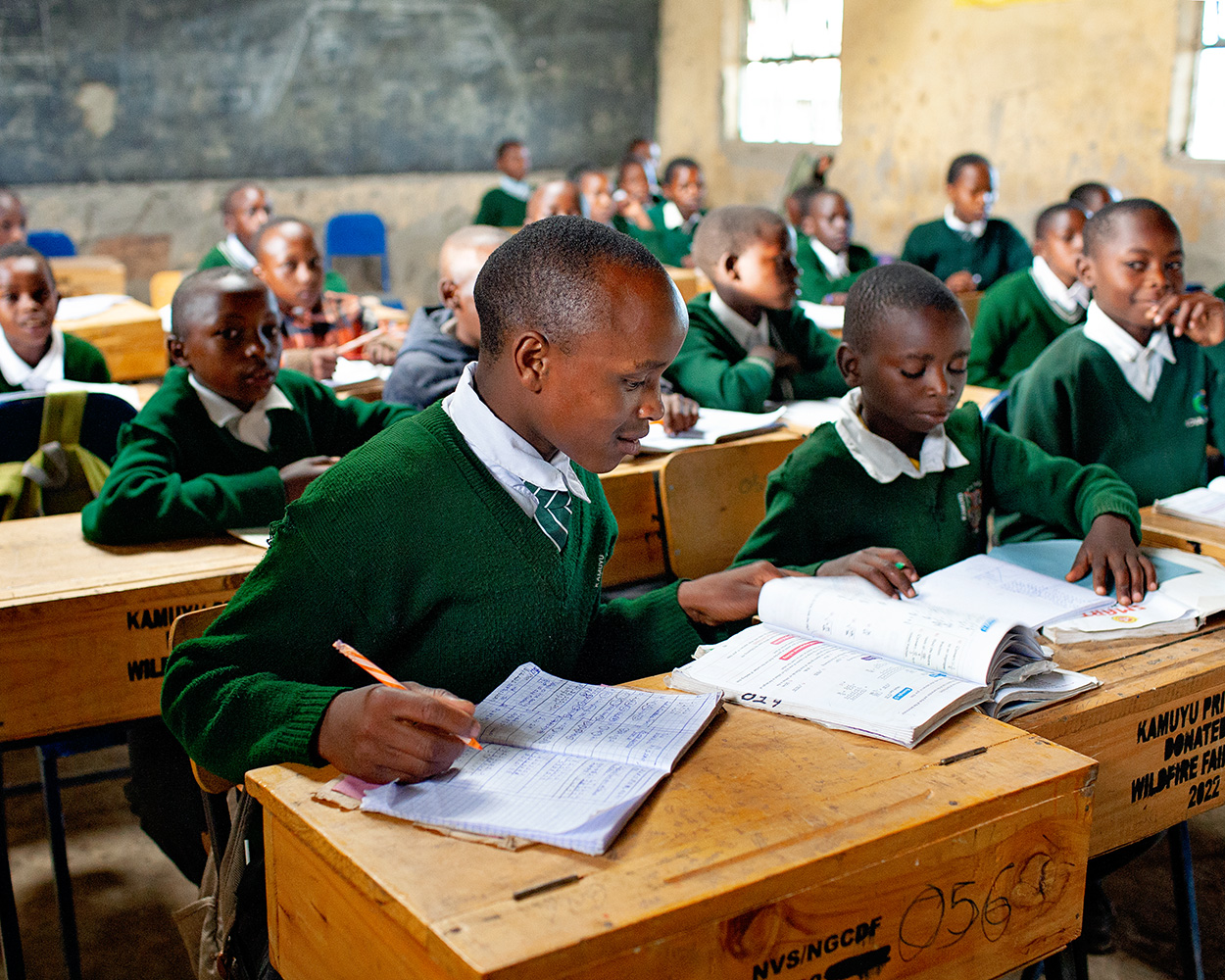
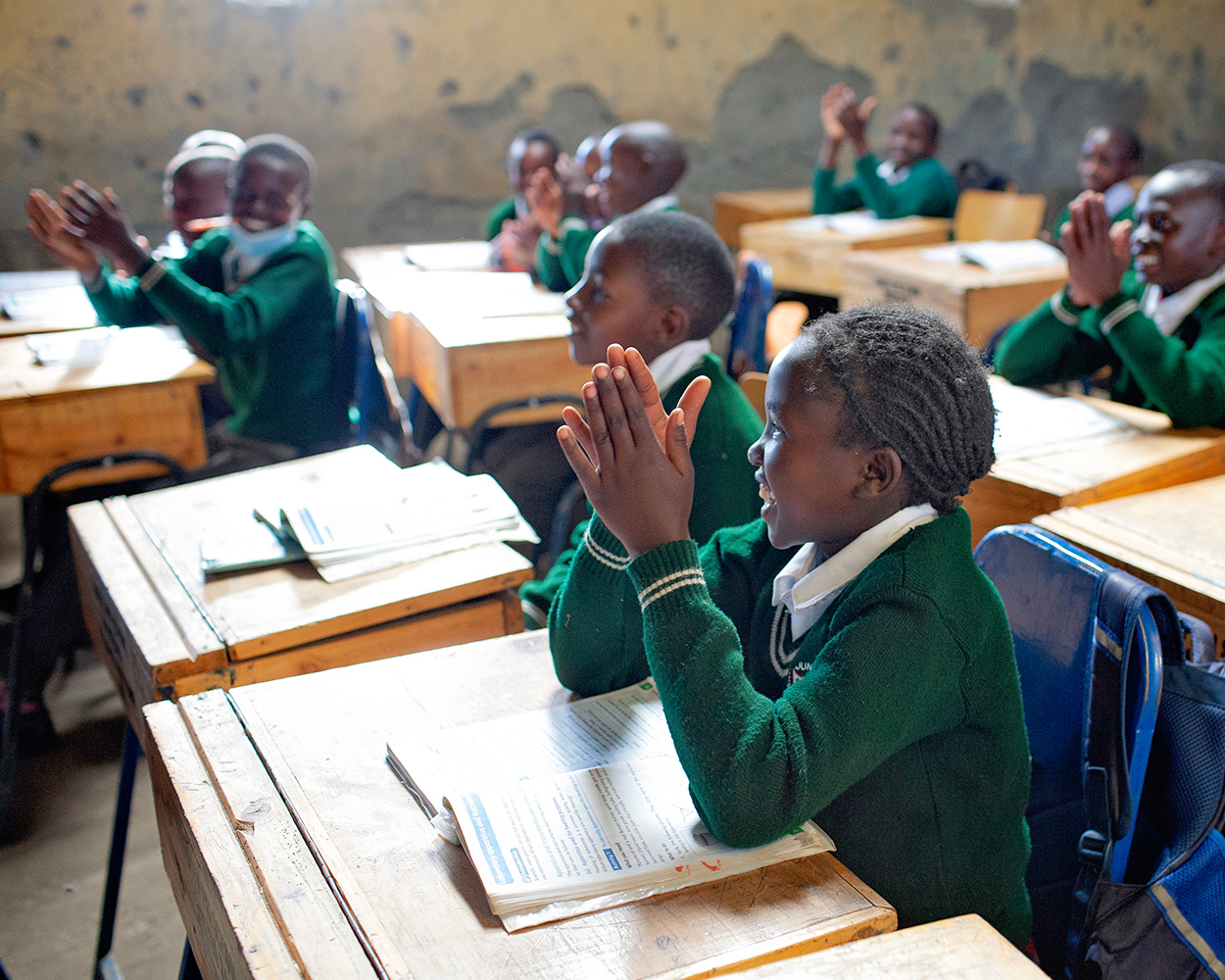
I think Ann W., one of our students from nearby Nyondia Primary, said it best when she wrote to us last year. “I would like to thank you for giving us food. You mean something in Nyondia pupils’ lives. Our school is 10 km away from our home. Sometimes when I get up I don’t feel like coming to school, but then I remember the meal that you give us for lunch. And that makes me come to school.”
From all of us at Kenya Kids Can, thank you for loving our students.
Let Us Know What You Think
